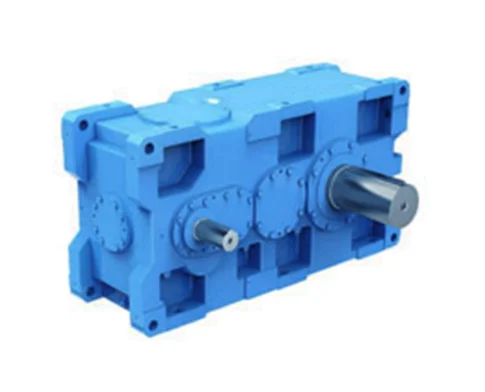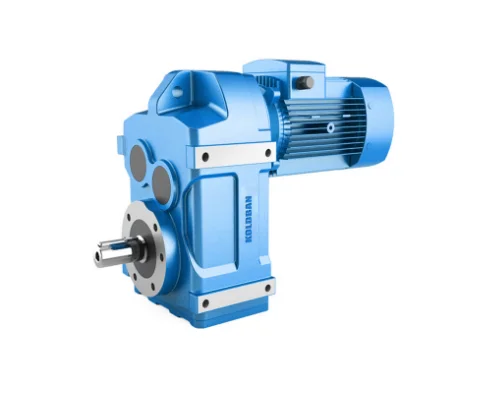Introduction
The gear box and gear motors are two components that hold significant importance in the domain of mechanical engineering and design due to their critical functions in power transmission and modulation. The ability of modern industry to precisely regulate and implement power is made possible by these components, which serve as pivot points in a vast array of apparatus. This article examines how gearboxes and gear motors function both independently and in concert to attain mechanical excellence, thereby establishing a symbiotic relationship between the two. We will explore the dynamic duo’s vital contribution to mechanical power, from the fundamentals of their operation to the intricacies of their integration.
Gaining Knowledge of Gear Boxes
Precious as a gearbox?
Mechanically speaking, a gear box is an apparatus intended to reduce the pace of an output device while increasing torque. Gear ratios, which are established through the configuration and dimensions of gears inside the enclosure, govern its operation. Whether turning a high-speed motor slower or increasing the force exerted by a power source, machines can operate more efficiently with the proper gear ratio.

Functioning Gear Boxes
Aligning the speed and torque of a motor with the requirements of a specific application is the fundamental role of a gear box. It guarantees efficiency and prevents damage caused by overspeeding by ensuring that machinery operates within its optimal performance range. In applications spanning from large industrial apparatus to household appliances, this modulation of power renders gear boxes indispensable.
Application of Diverse Sorts of Gearboxes
An assortment of gear boxes are available, each of which is engineered to cater to distinct operational demands and applications.
Hydraulic Gearboxes
Helical gear boxes, which are characterized by their angled teeth, function quietly and efficiently, rendering them well-suited for applications involving high speeds.
Bevel Gearboxes
For power transmission between perpendicular shafts, bevel gearboxes, which are frequently found in automotive differentials, are distinguished by their cone-shaped gears.
Planetary Gearboxes
Planetary gear boxes are well-suited for tasks that necessitate substantial reductions in both torque and speed due to their compact dimensions and exceptional efficiency.
The diversity and vital function of gear boxes in contemporary machinery are exemplified by the fact that each variety of gear box contributes something distinctive to mechanical systems.

Examination of Gear Motors
In definition, a gear motor is…
Integrating an electric motor with a gear system, a gear motor is fundamentally an integrated device. This combination facilitates the efficient and rapid transmission of electricity to diverse apparatus. By enclosing the motor’s propelling force within a gear box, which optimizes the transmission of power, gear motors simplify construction and functionality.

Specific Functions of Diverse Sorts of Gear Motors
By virtue of the electric motor employed and the gear box configuration, gear motors can be classified. Consider the following in greater detail:
In applications where dependability and longevity are more important than speed regulation, such as conveyors and turntables, AC gear motors, which are propelled by alternating current, are frequently employed.
DC gear motors provide enhanced speed regulation and are well-suited for tasks that demand high torque and variable speed, such as robotics and automated machinery, due to their direct current power source.
Servo gear motors are a type of precision gear motor indispensable in robotics and CNC machinery, as they enable exact regulation of angular position, velocity, and acceleration.
Instances of gear motors suitable for virtually any application requiring controlled motion can be found, as each type fulfills a unique function.

Gear and Motor Integration
Gear motors are exceptionally efficient because gearing and motors are integrated into a single, compact unit. Manufacturing facilities can enhance the dependability of their equipment and decrease mechanical intricacy by integrating these elements. By precisely regulating the motor’s output, the gear box accommodates fluctuating velocities and loads, thereby ensuring the machinery’s seamless operation.
How Gearboxes and Gear Motors Operate in Concert
As evidence of the effectiveness of engineering integration, gear boxes and gear motors work in tandem. This segment examines how the integration of these elements results in the development of versatile and high-performing mechanical systems.
Mechanization of System Improvement
A formidable tandem equipped to confront the most arduous mechanical challenges is formed by the combination of gear boxes and gear motors. Precision machinery control is made possible by gear boxes, which regulate the torque and speed output of the gear motor. As a result of this synergy, robust systems that are also flexible to diverse operational requirements can be created.
Advantages of Gear Motors and Gearbox Combination
Increased Torque: The gear box possesses the capacity to significantly magnify the torque generated by the motor, enabling the implementation of labor-intensive tasks. Enhanced Speed Regulation: The gear box provides the flexibility required for gear motors to attain a broader spectrum of speeds, thereby improving machinery control. Enhanced Performance: Systems incorporating both components can function more efficiently in the face of fluctuating load conditions, as the gear box can adapt the output to align with demand.
The integration of gear boxes and gear motors is critical for the successful operation of various applications, including robotics, conveyor systems, and automotive technologies.
Gear Technology Developments and Innovations
There are constant advancements in gear technology that seek to increase the power density of gear boxes and gear motors, decrease their size, and improve their efficacy. In addition to improving performance, these developments also create novel opportunities for their implementation in diverse sectors.
Gearbox and Gear Motor Technology Developments in the Current Year
Due to progress in the field of materials science, gear boxes and gear motors have undergone significant reductions in size and weight while maintaining enhanced efficiency and strength in their construction. Additionally, in the past, the fabrication of gears with intricate configurations and shapes was unattainable. Nevertheless, technological progress, exemplified by 3D printing, has made it possible to produce such components, thus significantly enhancing their operational capabilities and efficacy.
In addition, a substantial advancement has been made with the incorporation of intelligent technology into gear systems. By integrating sensors and connectivity functionalities into smart gear boxes and gear motors, it is possible to detect and forecast maintenance requirements in real-time, make dynamic adjustments to their operations to enhance efficiency, and extend their operational longevity.
Industry-Specific Effects of Innovations
Sectors that depend on mechanical systems are significantly influenced by these technological developments. By utilizing gear boxes and gear motors that are more compact and efficient, for instance, greater agility and functionality can be achieved in the field of robotics. Advancements in transmission technology prevalent in the automotive sector are crucial in facilitating the development of more powerful and fuel-efficient electric vehicles.
Gearbox and Gear Motor Selection Pertaining to a Particular Application
Merely employing the proper gear box and gear motor is sufficient to guarantee optimal performance and dependability of mechanical systems. When arriving at this conclusion, it is critical to consider the subsequent elements:
Requirements and Compatibility
It is critical to comprehend the load requirements, which include the speed and torque specifications of the intended application. The model of gear box and motor required will be determined by this.
Acceleration
When deciding between AC and DC gear motors, consider whether your application necessitates variable speed capabilities.
The selection of the gear box will be influenced by the required torque, as various gear box models provide varied degrees of torque attenuation.
Prolonged Operation and Upkeep
Equipment longevity and outage can be substantially decreased by selecting gear boxes and gear motors that are renowned for their resilience and simplicity of upkeep. Additionally, it is advisable to choose components with adequate support and spare part availability.
Selection Guidelines
Make sure the gear box and motor are always compatible in terms of dimensions, mounting, and power needs. Ascertain that the chosen components will not impede the scalability of your system by contemplating future requirements and potential expansions of your application. Energy-efficient systems can provide substantial long-term cost reductions as a result of decreased consumption. In this regard, efficiency should not be underestimated.
Conclusion
A fundamental element of contemporary mechanical engineering, the relationship between gear boxes and gear motors provides applications with power, efficiency, and control that are impossible to match. It is evident that these components will forever be indispensable in the advancement of sophisticated mechanical systems, owing to the complexities of their operation and the most recent developments in the field. Engineers and designers can revolutionize the development of apparatus and devices that are more potent, efficient, and versatile by mastering the skill of choosing and integrating these components efficiently. By doing so, they can unlock the complete potential of gear boxes and gear motors.

